For over a decade, people have wondered exactly how Precision Nutrition gets such remarkable—and sustainable—results with clients. Today the step-by-step formula is revealed. Want to change your own life? Try the ideas yourself. Want to improve as a coach? Try them with your clients.
- Want to listen instead of read? Download the audio recording here…
++
Ever wondered what it really takes to accomplish something big?
Like the overweight person who loses hundreds of pounds of body fat.
Or the scrawny person who gains strength, along with dozens of pounds of muscle.
Or the lifetime dieter who finally achieves a healthy relationship with food.
At Precision Nutrition, we see this kind of change every single day. Through our work with over 150,000 clients and more than 175,000 students, we’ve learned that seemingly impossible goals can be achieved remarkably quickly and easily… if you follow the right process.
Read on to learn our previously top-secret formula for helping clients lose weight, build strength, and change all aspects of their lives.
- In addition to this article, we created a cool infographic. Check it out here…
Breaking goals into skills; skills into practices
There’s a lot of emphasis on goal setting these days.
We’re taught to think about what we want to accomplish: Our goal. Then we’re supposed to make it specific, measurable, attainable, blah, blah, blah.
But what happens once we’ve done all that? When we’ve set the ultimate goal?
For most people, not much.
That’s because goals aren’t achieved through the mere act of setting good ones. And goals aren’t achieved through sheer force of will.
So if it’s not rational, thinky-brain firepower, and it’s not white-knuckled willpower, what is it?
We’ve found that goal achievement only happens—reliably—when you do two things.
- First, you break down the thing you want to do (your goal) into specific aptitudes (skills).
- Second, you build those aptitudes (skills) through strategic daily actions (practices).
The formula pretty much looks like this:
Practice daily to build skills.
Build skills to achieve goals.
Do this well and you can accomplish your goals more quickly (with less effort) and maintain your results.
How we do this at Precision Nutrition
At Precision Nutrition we are masters of this process.
Through our personal coaching programs we use this method to help people lose weight, build strength, and develop healthier relationships with food.
And through our certification programs we use it to help health and fitness professionals become world-class supercoaches.
Here are two examples of how we do it.
Weight loss example
Goals
Let’s say it’s your goal to lose weight. You know that to lose weight you’ll need to eat better consistently. So that’s your real goal: Eat better consistently. But you don’t have all the skills to do it just yet. So you have to break it down into…
Skills
Which skills are required to eat better consistently? At PN, we’ve identified hunger and appetite awareness as the most important initial skill for making progress. But that’s not totally actionable. So you have to break it down into…
Practices
At PN we use eating slowly (practice #1) and eating until satisfied, not stuffed (practice #2) to build the hunger and appetite awareness skill. Clients eat slowly for two weeks. Then they practice eating until satisfied for two weeks.
Therefore, over the course of a month, the daily practices of eating slowly and eating until satisfied, not stuffed will build the skill of better hunger and appetite awareness.
And that is one of the necessary skills for eating better consistently.
Professional coaching example
Goals
Let’s say it’s your goal to become a world class, in-demand supercoach. You know that to become a supercoach you’ll need to consistently deliver client results. So that’s your real goal: Consistently deliver client results. But you don’t have all the skills to do that yet. So you have to break it down into…
Skills
Which skills are required to consistently deliver client results? At PN, we’ve found that helping clients take action in their lives is an important initial skill for making progress. But that’s not totally actionable. So you break it down into…
Practices
At PN we’ve identified that clarifying a client’s values and priorities (practice #1) and translating those into action steps (practice #2) are the best ways to build the skill of helping clients take action in their lives. Students spend two weeks on practice #1. Then two weeks on practice #2.
Therefore, over the course of a month, the daily practices of clarifying a client’s values and priorities and translating those into action steps will build the skill of helping clients take action in their lives.
And that is one of the skills needed to consistently deliver client results.
These are just two examples from our personal coaching program and Level 2 professional certification program. Over the course of each program we build dozens of other skills through very specific and well-defined daily practices.
Each practice is built from our “Five S Formula”.
Precision Nutrition’s Five S Formula
When we break skills down into practices, each practice must be:
Simple
The best practices are small daily actions that can be done in the context of real life. If you ask yourself or your client, “On a scale of 0-10, how confident do you feel you could do this practice every day for the next 2 weeks?” the answer should be a 9 or 10. Anything lower and the practice is too challenging or intimidating.
Segmental
Most goals are too big, or complicated, to try for in one go. Most skills are the same way. So you break them down into defined and organized segments. Just like when learning / teaching complex exercises, you need to chunk bigger things into their component parts.
Sequential
Breaking things down into segments is great. But you also have to practice those segments in the right order. If you do “thing 4” before “thing 1” you’re less likely to succeed. So start with thing 1, then do thing 2, then thing 3, and so on. Do the right things in the right order and success is a reliable outcome.
Strategic
Think this process sounds slow? Fact is, if your practices are strategic, the whole process goes quicker. That’s because strategic practice addresses the thing that’s in your way right now. Focus on that one thing—and only that thing—and a difficult process becomes easier and faster.
Supported
Practices work best when they’re supported by some form of teaching, coaching, mentorship, and accountability. More on each of these in a minute.
Try the Precision Nutrition process on yourself
Want to try out the Precision Nutrition process for building skills? Use our “From Goal to Action” worksheet.
Here’s what you do:
- Download the worksheet.
- Pick a goal you’d like to achieve. Any goal works here from lose 10 pounds, to increase bench press by 30 pounds, to learn to play “Hey Joe” on the guitar. Write your goal in the top box.
- Brainstorm the key skills needed for that goal. Any skills are fair game. If you’re not sure, take a guess. Write those skills in the next set of boxes.
- Brainstorm which practices would help develop those key skills. Think about small things you can do every day to build your skill set. Write those practices in the next set of boxes.
Tip: You can always consult an expert later on to help you nail down the segments, sequence, and strategy. For now, just have some fun and see what you come up with.
When you need support
If you’re ridiculously motivated—and relentlessly tenacious—you might be able to figure this stuff out and lone ranger your way toward your goals.
Maybe.
In our experience, though, most people need some amount of coaching and support.
And that’s okay. It’s not a sign of weakness or incompetence. In fact, it’s the way most humans do most things.
It’s how we learn to read, write, walk, and talk. It’s how we learn to do a job and improve professionally. It’s how we become better parents and partners. It’s how we grow as human beings: with coaching, support, and accountability.
The individualist hero who accomplishes big things all by themselves is a myth.
On the other hand, the following ingredients breed success:
Encouragement during the courage phase.
The “courage phase” is the gap between committing to something and possessing the skills to accomplish it. At this moment, you’re committed, but not quite capable. Moving forward takes courage.
At times like this it’s nice to borrow courage from a coach or mentor who’s been through the process themselves. In our coaching programs we provide that kind of support when you need it via coaches, mentors, and workshop leaders.
A known cadence of accountability.
We all know accountability—regularly checking in with someone—is important. The social commitment helps us stick with what we started.
But did you know accountability works best if it happens at regular, expected times? Whether through an app, in a group, or one-on-one, accountability should have a known cadence.
For example, our coaching check-ins happen once a month through group workshops; if you’re working with a personal coach, check-ins are more frequent.
Interesting fact: In our survey of over 10,000 people, over 80% of respondents ranked accountability as a “very important” part of getting in shape. However, nearly 80% of those folks said they didn’t have a way of keeping themselves accountable. That’s why we recommend coaching.
A respected coach.
Most people don’t want “an expert”. They want a guide, a coach, someone they trust and respect. And most people don’t want someone in their face “coaching” them 24/7. They just want the confidence of knowing someone is there if they need it.
That’s why we make world-class coaches available to all our clients either full time (in our personal coaching program) or a la carte (in our on-demand coaching program).
Clients also get to work with me and Dr. Krista Scott-Dixon once a month in a group format. We lead them through activities and thought exercises that help them recognize critical progress factors, problem-solve, and obstacle-proof their success.
Positive progress focus.
Most of the fitness industry hasn’t gotten the memo: Comparing yourself to some superhero ideal doesn’t work. It makes you feel inadequate. Like you’ll never get there. Which is why it’s important to seek out—and shine a light on—any and all positive progress. Bonus points for celebrating that progress when it happens.
In our coaching programs we relentlessly look for this sort of thing. Sometimes that means standard metrics like weight loss or calories consumed. But mostly we track unconventional things that point to the real progress a client is making.
Even if clients aren’t seeing physical results yet, if they’re showing up, good things are happening. By identifying and celebrating that stuff, the physical progress will follow.
Proactive obstacle identification.
Of course, it’s not all high-fiving and progress celebration. Sometimes real challenges come up. That’s a fact of life. Strategies are required to move past these inevitable obstacles.
What’s better than solving a problem? Avoiding that problem in the first place. That’s what great coaching can do.
Experienced coaches can give clients get a heads up—in advance—about what they’re likely to come up against. That way clients know what problems to look out for, and they’re less likely to get derailed.
Help when you’re stuck.
Even with the best daily practices, ongoing progress tracking, accountability, and proactive obstacle identification, sometimes clients get stuck. That’s when an expert guide can help. Someone who’s “been there, done that” and knows how to navigate.
Once again, that’s why we make world-class coaches available to our clients, either full time (in our personal coaching program) or a la carte (in our on-demand coaching program).
Looking back, looking forward
Have I got you thinking about your own progress? If so, try our “Looking Back, Looking Forward” worksheet.
Here’s what to do.
- Download the worksheet and put it somewhere handy.
- Begin to work towards your next goal. (I recommend using the “From Goal to Action” worksheet to plan your curriculum).
- After a few weeks of working towards that goal pull out this new worksheet. Answer the first five “looking back” questions. They’ll help you realistically appraise your progress.
- Once you’re done those, answer the next four “looking ahead” questions. They’ll motivate you and help you strategize around future obstacles.
What to do next
Of course, we can’t shoehorn the entire Precision Nutrition Coaching process into a single article. But hopefully you’ve gained some insight into how we coach, and more importantly, learned some new ideas.
Here’s a quick summary:
- Think about any goal you want to achieve.
- For fun, download our “From Goals to Practices” worksheet and write your goal at the top of the page in the “goal” box.
- Now brainstorm what skills may be needed to achieve your goal. They don’t have to be perfect—just get your brain working. Write your ideas in the “skills” boxes.
- Think up some practices that may help you build those skills. Again, perfection not required. Write your ideas in the “practices” boxes.
- Once your worksheet is complete, review the plan. Do you have the expertise to know whether it’s right for you? If so, consider the right time to get started. If not, is there someone who can help review the plan and help you revise it?
- When you’re confident with the plan, consider what you’ll do for support and accountability. Who will you check in with? How frequently? What can they help with?
- Get started. Begin with your first 2-week practice and continue your curriculum of practices from left to right on your worksheet.
- Download our “Looking Back, Looking Forward” worksheet.
- Every month or so, fill out the worksheet to celebrate how far you’ve come and plan your upcoming success. Either keep your answers to yourself or share ‘em with your coach.
- If you get stuck at any time, find help. Don’t try to go it alone. There’s someone out there that can help you overcome obstacles or re-route your plan.
And remember: This process works for any goal.
I’ve personally used it to eat better, lose body fat, compete in masters level track and field, learn gymnastics, become a better leader at work, and become a better partner and parent at home.
If you give it a try, I’m confident it’ll work for you.
Want some help?
Twice per year we accept new clients in our Precision Nutrition Coaching Program, where we coach men and women to help them eat better, exercise smarter, and improve their health.
And in our Precision Nutrition Level 1 Certification Program and Level 2 Certification Master Class, we work with fitness and health professionals to help them become elite supercoaches in their communities.
Since we can only work with a small percentage of the people who express interest in our programs, when we open up spots, they usually sell out within hours. That’s why, if you’re interested in working with us, it’s important to place your name on one of our presale lists.
By being on one of these lists, not only will you get the chance to register 24 hours before anyone else, you’ll also get a discount on the program.

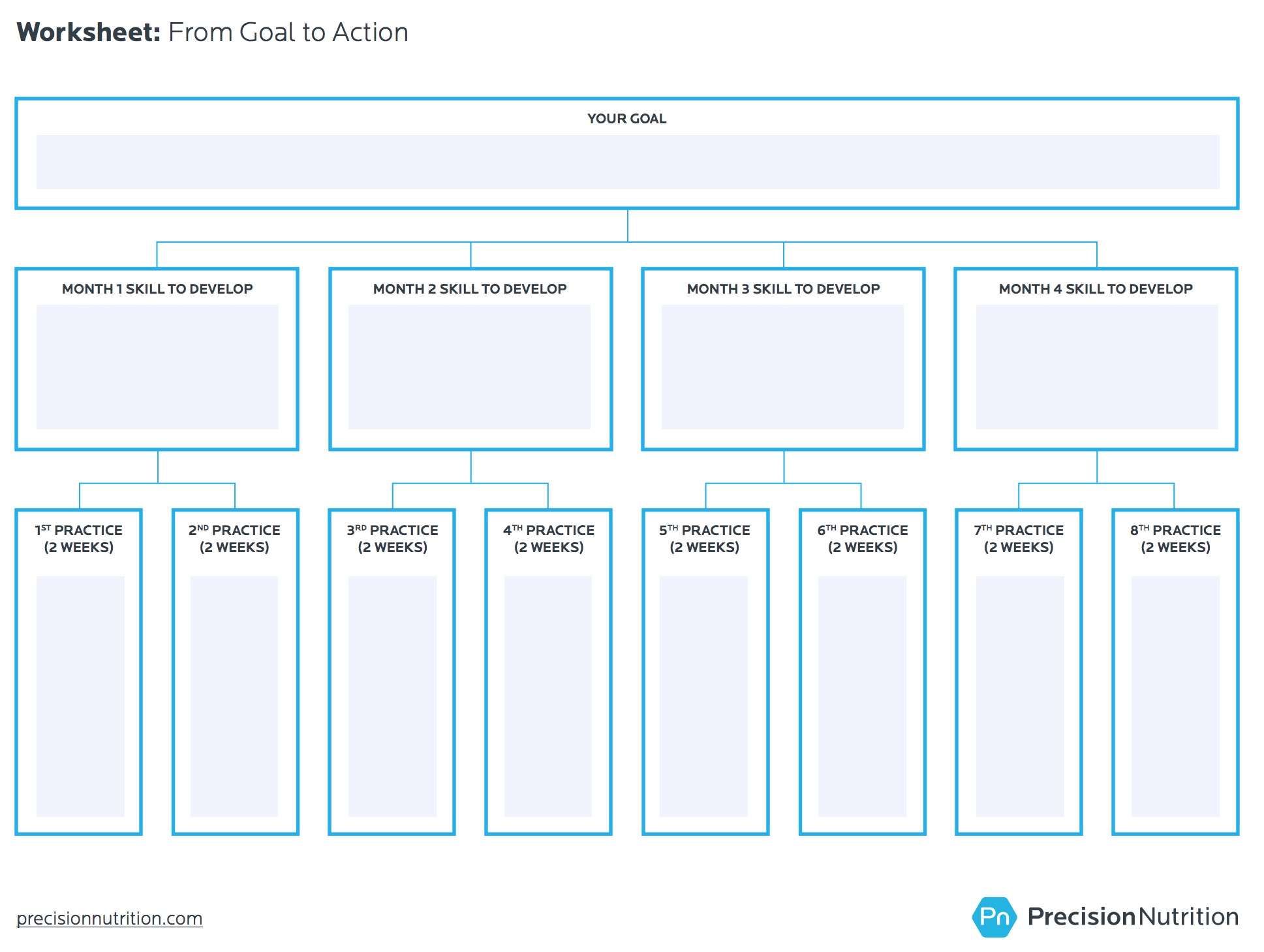
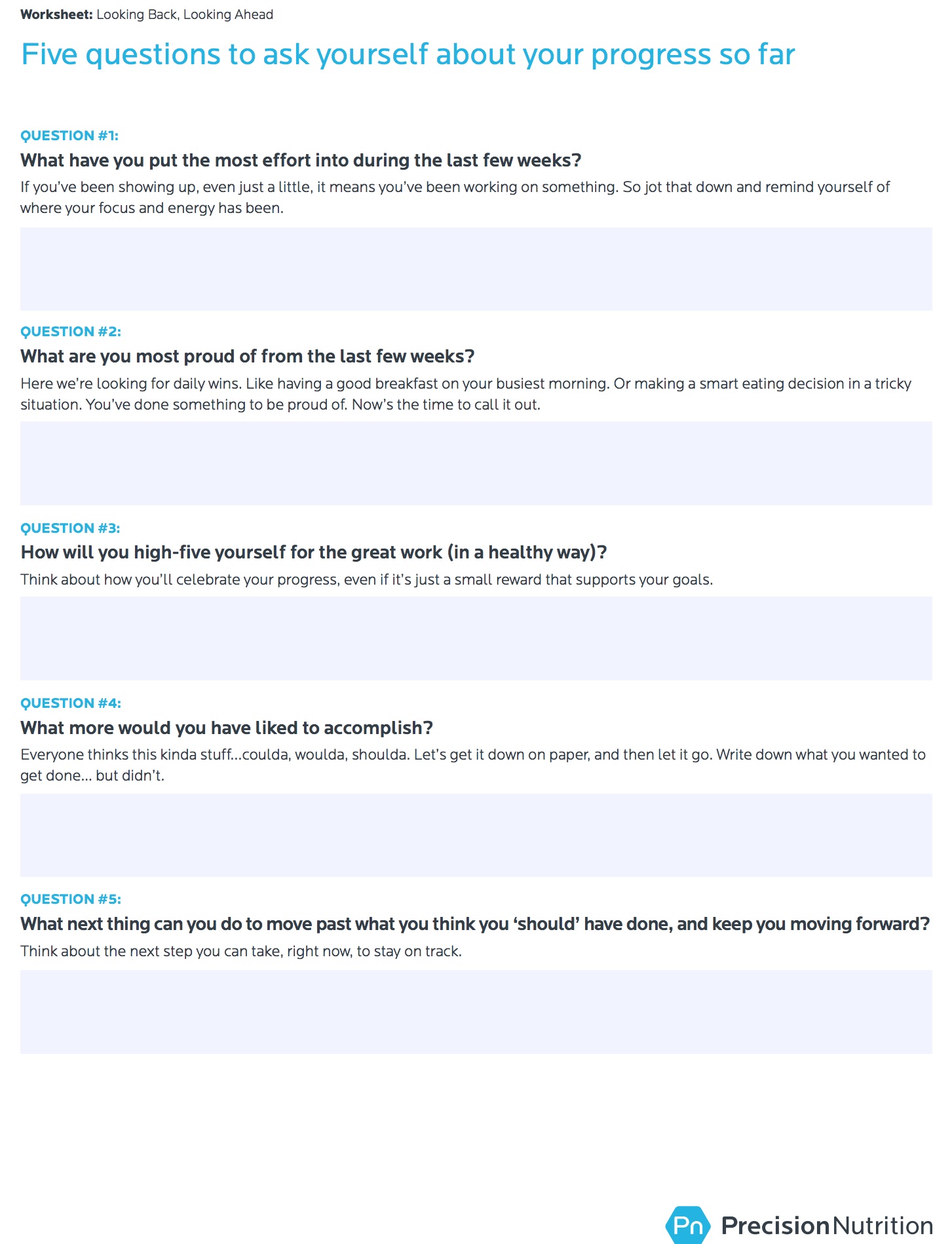
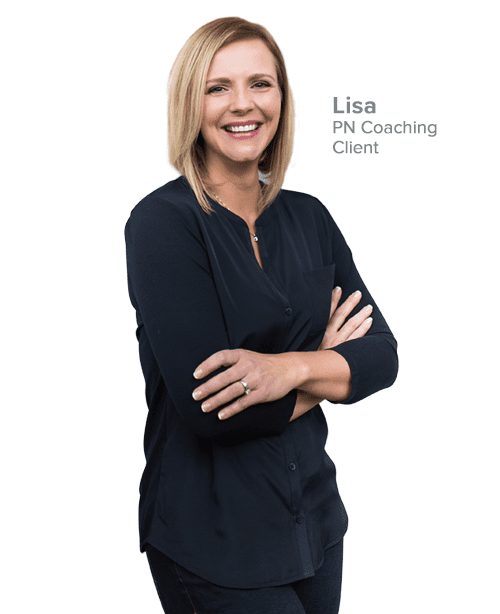
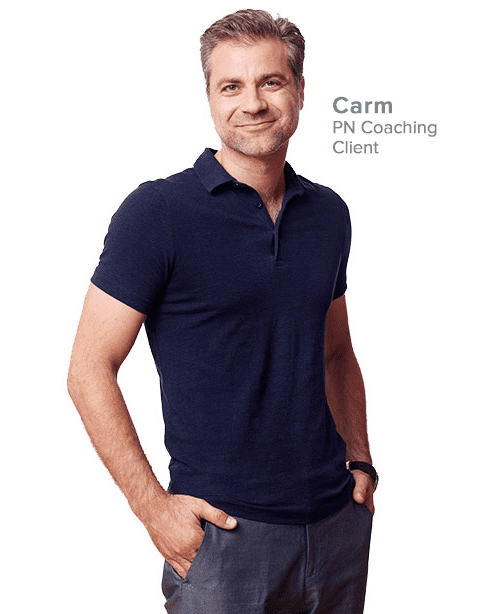
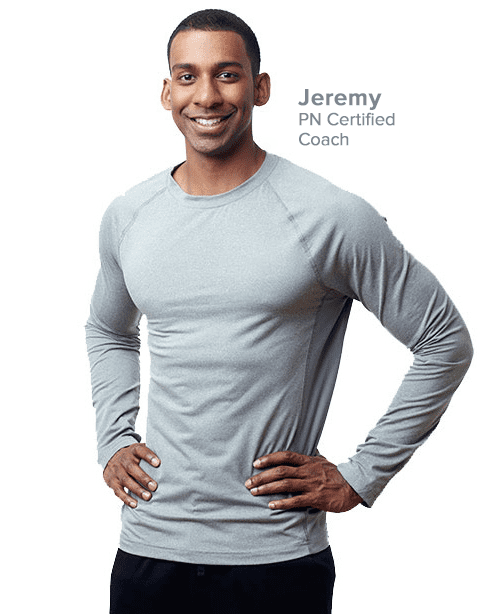
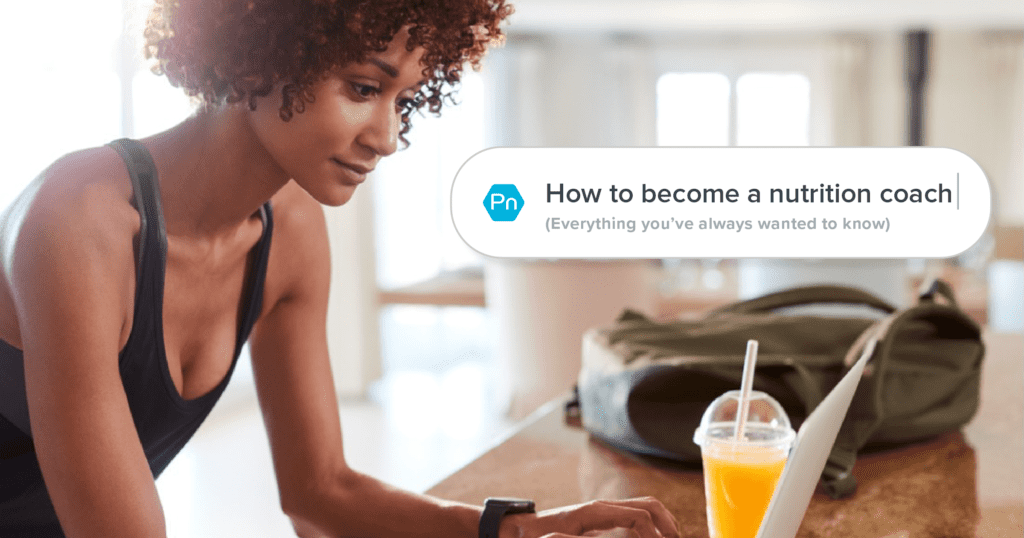
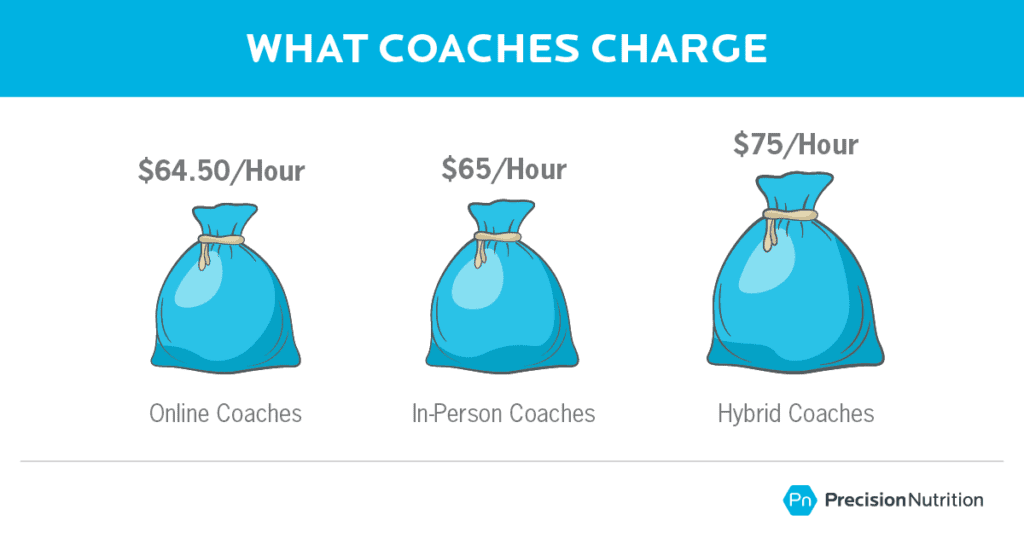
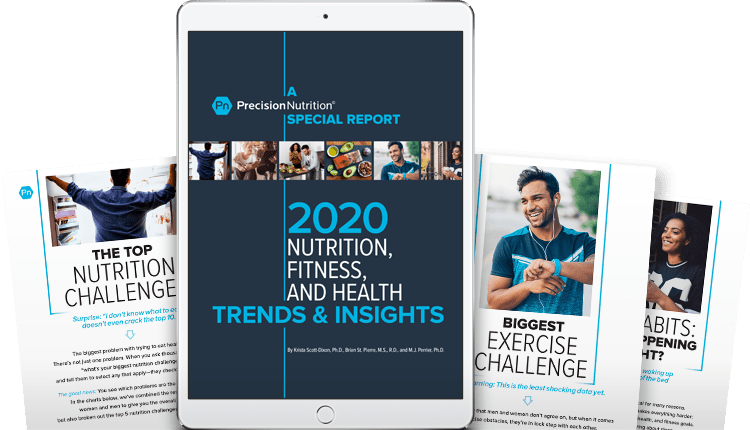
Share